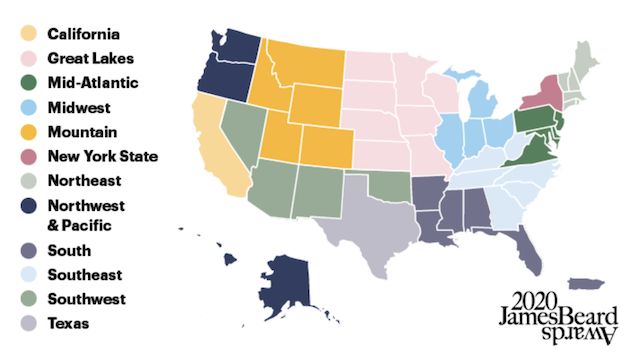
When I gave notice, in May, that I was no longer associated with the James Beard Foundation, after having been a regional judge for 30 years, the chief reason I gave was my frustration with the awards process and the imbalance of competing entities within most regions. Specifically, Florida, as part of the South region, was grouped in with, among others, Louisiana. Therefore, New Orleans, one of the country’s great dining destinations, dominated the nominations each year, overshadowing other deserving chefs and restaurants, including many in Central Florida.
This month, JBF announced changes to its chef awards, increasing the number of regions to 12 from 10. But before you get too excited you should know that the changes will not affect the disparity that faces Florida and other states and communities clumped in with culinary powerhouses. In fact, in at least one instance, it makes things worse.
That’s my take, anyway, of the decision to make New York state, including New York City, a standalone region. Previously, the five boroughs of New York comprised a separate region, with upstate New York grouped in “Northeast” with other New England states. Now, expect NYC chefs to tip the scales away from, say, a chef in Rochester who might otherwise have had a chance competing against a chef in Providence.
California and Texas are also becoming one-state regions under the new guidelines. And the foundation has also created a region called simply Mountain, meaning the Rockies and including Utah, Wyoming, Colorado, Idaho and Montana. Leave it to the Beard organization to completely ignore that there are other mountain ranges in the United States.
The addition of new regions is the first since 2007 when the number of regions increased from eight to 10.
None of the changes will have any bearing on the way the winners are selected. Nominations will be made by regional judges, groups comprised primarily of food journalists and restaurant critics, who then cull the list to five finalists for each region. Judges only have to affirm that they’ve previously eaten in the restaurants or tasted the chefs’ food. None are sent to the restaurants to make a final decision.
And the judges may vote for nominees outside their regions. So, if I noticed that a chef at a restaurant in Boston that I dined in 15 years ago was nominated, I could vote for that chef. Unlike other restaurant recognition events, such as the Michelin Guide ratings or even AAA and Mobile, no judges are dispatched to actually eat in the restaurants before the awards are announced.
That would take considerable time and money. But it’s not like the nonprofit foundation doesn’t have resources. One of my other complaints with JBF is the crass sponsorship of most of the award categories. Example: Rising Star Chef of the Year (Presented by S.Pellegrino® Sparkling Natural Mineral Water).
How about taking some of that promotional consideration and pay for some meals for judges to have in nominated restaurants? Then maybe they might notice that the food served in many Central Florida restaurants is just a noteworthy as they’ll find in the hottest new spots in New Orleans.










